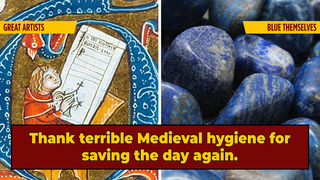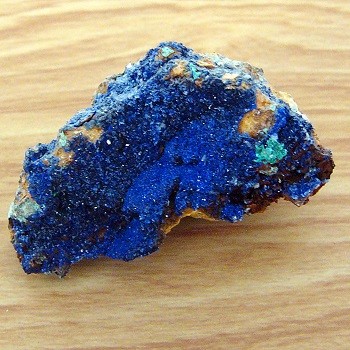Looking For The Best Medieval Artists? Check For Blue Teeth.

Like Gregorian chanting and competitive turnip carving, the art of illuminating manuscripts was a major Medieval artform. Only the greatest European artists were tasked with painting the elaborate illustrations and fonts found in precious books. Yet today, we hardly know any of the names of these Monets of the marginalia, these Frida Kahlo's of frontispieces.

Until now. Since most Medieval limners were Catholic laypeople such as monks, they never signed their work out of humility -- to suck up to God. But in 2019, archeologists reported having stumbled upon a new method to spot Medieval talent just by their teeth. And like any groundbreaking scientific discovery, it started with a study into the eating habits of dead German nuns. In a typical experiment, researchers were dissolving the dental plaque of a 1,000-year-old female corpse buried in the nuns' graveyard in Dalheim, Germany, to figure out her eating habits from her unbrushed teeth. To their surprise, the chemical process released a cloud of glittering blue flecks, their acidity pointing to only one possible origin: the most expensive paint in the world.

When ground, the gemstone lapis lazuli is known to produce the finest color blue known to man, ultramarine, which sparkles slightly thanks to the tiny minerals refracting the light. They're also known to bankrupt anyone who wants to paint with it. Since the stones are only found in a single region of Afghanistan, importing lapis lazuli into Europe to turn into a pigment was so expensive it's akin to buying a new iPhone only to blender it for a dollop of iRose gold paint. As such, to illustrate a book using ultramarine was a show of not just status but also devotion to God: the color was most famously used to beautify the iconic blue robes of the Virgin Mary.

Because of its ridiculous cost, only the most talented artists of the Medieval Age were permitted to handle paint made of lapis lazuli. So how does about a grand's worth of the gemstone get stuck in a German nun's teeth tartar? Like the 20th century watchmakers who didn't realize that painting with radioactive materials would cause their tongue to glow in the dark, this nun employed the common yet gross practice of licking her brush to sharpen its point, not realizing they'd be picking the lapis lazuli out of her teeth for a millennium.
But equally important to having winkled out a method to posthumously find great contributors to the Medieval art scene, finding lapis lazuli wedged inside of the grill of a nun is a historic victory for equality. Until now, it was always assumed that only male scribes were in charge of providing manuscript illumination. This nun's artistic licking habit has proven otherwise, leaving the future possibility of more archeological graverobbing to discover just how many women blue themselves while spending time in solitude at the monastery.
For more archaic oral sex jokes, do follow Cedric on Twitter.
Top Image: Graciela Zerpa